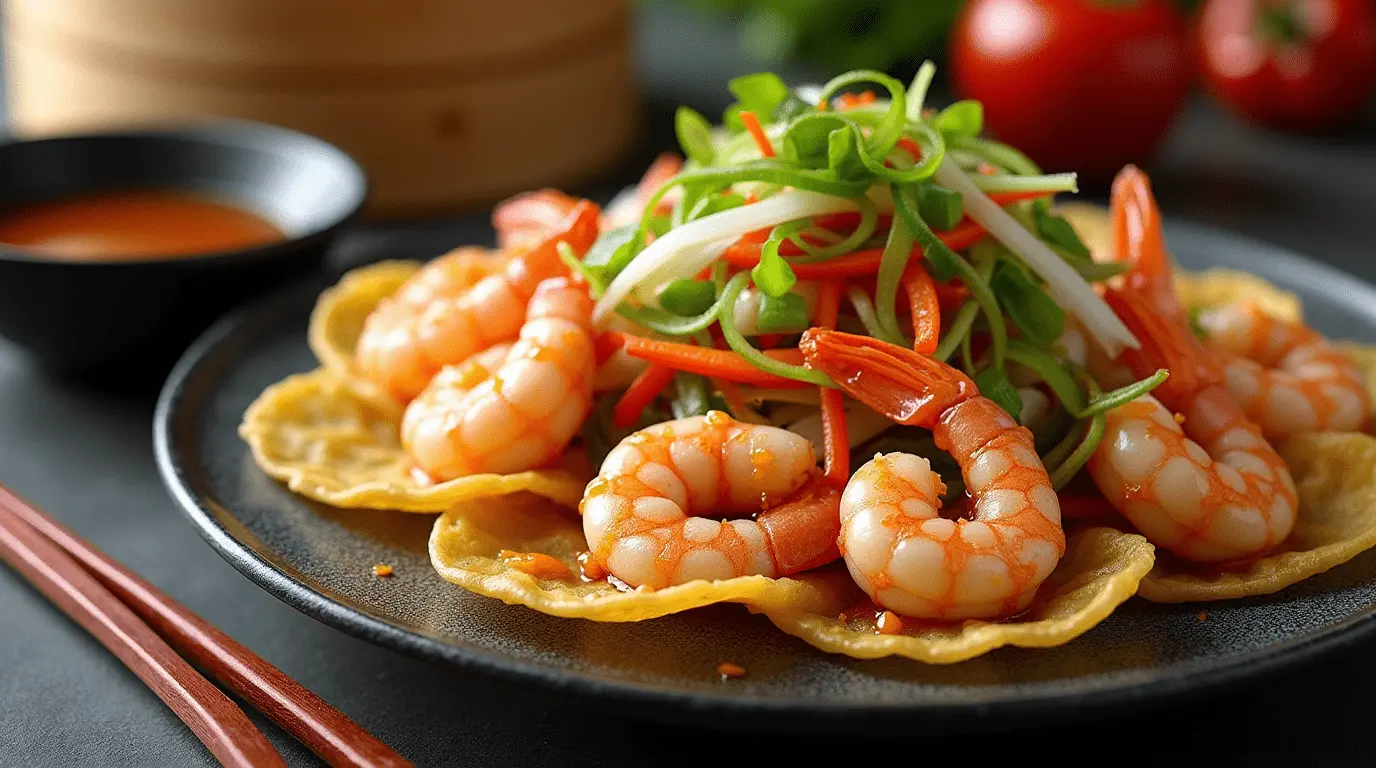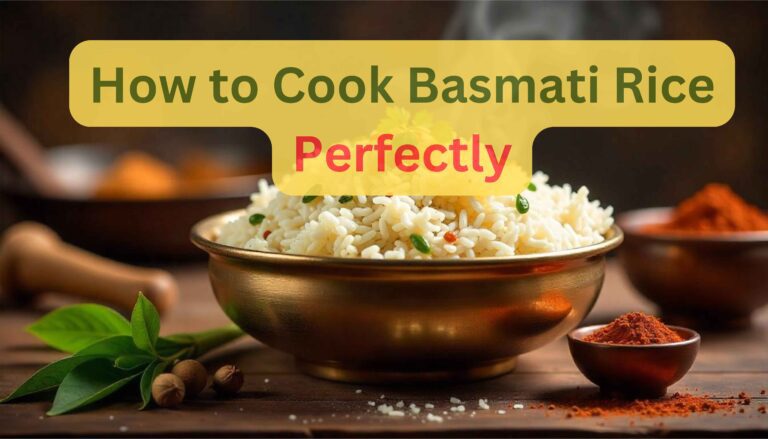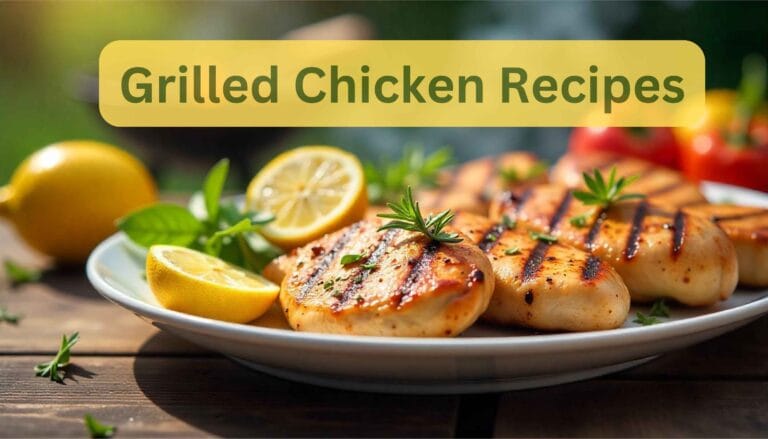Mu Shu Shrimp: A Quick Guide to This Tasty Dish
Table of Contents
One colourful Chinese meal is mu shu shrimp. It features fresh vegetables, soft prawns, and savoury sauces. All of these are presented inside delicate scallion pancakes. Restaurants love it since this combination of tastes and textures appeals to them.

Discover what makes mu shu shrimp unique. Learn how to make it at home with simple steps.
Learning what mu shu shrimp is starts with its ingredients. The shrimp’s sweetness pairs with veggies like carrots and cucumbers, and a tangy sauce ties everything together.
This manual breaks down the process. You don’t have to leave your kitchen to have a restaurant-quality meal.
Important Realisations
- For a fresh, tasty meal, mu shu shrimp mixes shrimp, vegetables, and pancakes.
- Making it home calls for a wok or skillet and simple ingredients.
- To get authentic Chinese tastes, the recipe calls for exacting stages.
- Serving calls for arranging ingredients for a pleasing bite in heated pancakes.
- Use this guide to learn how to make a meal typically reserved for dining out.
Mu Shu Shrimp: What is it?
Have you ever seen “Mu Shu Shrimp” on a menu and wondered what it was? You are not alone. Combining fresh vegetables, savoury shrimp, and tart sauce, this dish—also called moo shu shrimp—is served with soft pancakes. Let’s investigate its fundamental components and place in Chinese cooking.
Definition and fundamental elements
The main protein in a stir-fried meal called mu shu shrimp is shrimp. It combines with shredded vegetables, including cabbage, carrots, and scallions. Tossed in a sweet-and-sour sauce, the combination is covered with warm, thin pancakes. It is unique because of these elements:
- Protein: Big, firm shrimp for texture
- Vegetables: Crispy Julienned vegetables
- Sauce: Combining sugar, vinegar, and soy sauce
- Pancakes: Scallion or glutenous wraps
How Mu Shu Shrimp Differs from Other Chinese Dishes
| Comparison Point | Mu Shu Shrimp | Other Dishes |
|---|---|---|
| Protein Focus | Shrimp only | Beef (Kung Pao), chicken (General Tso’s) |
| Serving Style | Self-serve with pancakes | Plated in sauce |
| Sauce | Light, wrap-friendly | Thick, pour-over sauces |
Traditional vs. American Versions
| Aspect | Traditional | American |
|---|---|---|
| Protein | Pork or beef | Shrimp popularized post-1960s |
| Vegetables | Seasonal local veggies | Carrots, onions, mushrooms |
| Serving | Shared family-style | Individual portions |
History and Origin of the Classic Chinese Dish
The story of mu shu shrimp starts in Beijing and Shandong, northern China. It was first made with shredded pork in pancakes. The name moo shu means “scrambled” or “stir-fried,” which shows that it’s cooked. Later, chefs changed it to use shrimp, making it the mu shu shrimp we love today.
This dish has deep roots in Chinese history. It was served at imperial banquets, a sign of wealth. Chinese immigrants brought it to the U.S. in the 1900s, and cities like San Francisco and New York made it a hit.
Restaurants like PChang’s and Panda Express made it famous across the country. But some artists are as authentic as they are supposed to be.
You might notice how people say it differently. IChiit’si “‘s “‘s “”oo “hu,” but in U.it’si “‘ si” “‘” “m” “hu.” Both are the same dish, showing how cultures adapt.
- Origin: China’s imperial kitchens
- Key shift: Pork to shrimp variations
- Global spread: 1900s U.S. immigration waves
- Modern twist: Creative ingredient swaps
Knowing its history makes cooking moo shu shrimp even more special. Let’s look at what you need to make it, starting with the shrimp.
Essential Ingredients for Authentic Mu Shu Shrimp
To make mu shu shrimp, you need the right ingredients. The dish’s flavors and textures depend on. Let’s look at each part of the dish step by step.
The Protein: Choosing and Preparing the Right Shrimp
For tender bites, start with large shrimp (16-20 per pound). Wild-caught shrimp have a brinier taste, while farmed options are more common.
Clean them by peeling, deveining, and drying thoroughly. Moist shrimp steam better than sears, so pat them dry with a paper towel before cooking.
Vegetables and Aromatics
Crisp textures come from fresh veggies like Napa cabbage, wood ear mushrooms, and bamboo shoots. Add minced ginger and garlic for depth. Scallions add a bright finish.
Chop all veggies uniformly so they cook evenly.
Sauce Components
The sauce is key to the shrimp’s flavor. Mix hoisin sauce, sesame oil, rice wine vinegar, soy sauce, and a touch of sugar. Adjust the sweetness to taste—hoisin is salty, so balance with honey if needed.
Store-bought hoisin works well, but check for additives.
Pancakes and Wraps
Thin, soft pancakes are vital. Look for mu shu-specific pancakes at Asian markets or substitute flour-based tortillas. For homemade versions, mix flour, water, and a bit of oil.
Cook them thin and stack them warm to serve alongside the dish.
Kitchen Tools You’ll Need
You need the right tools to make mu shu shrimp like a pro. Start with a carbon steel wok or a large skillet for stir-fry. A chef’s knife makes chopping veggies quick and easy.
Mixing bowls from brands like Pyrex or OXO are great for sauces and marinades. A heat-resistant spatula keeps shrimp from sticking. Use a bamboo steamer basket or collapsible steamer to keep pancakes warm. Serve everything on a Lazy Susan or large platter for easy assembly.
- Wok or Skillet: A 14-inch carbon steel wok or a 12-inch cast-iron skillet for even heat distribution.
- Knife and Cutting Board: An 8-inch chef’s knife paired with a bamboo or plastic board for precise slicing.
- Saucepan or Mixing Bowls: Glass or stainless steel bowls for sauce prep and ingredient marination.
- Spatula: A flat, flexible silicone spatula for tossing ingredients without scratching pans.
- Steamer: A 10-inch bamboo basket or collapsible stainless-steel steamer for pancakes.
- Serving Platters: A round wooden Lazy Susan or a large ceramic platter for assembling wraps.
| Traditional Tool | Alternative Option |
|---|---|
| Carbon steel wok | 12-inch stainless steel skillet |
| Bamboo steamer | Microwave-safe plate over a pot of boiling water |
| Silicone spatula | Wooden spoon (avoid metal on non-stick pans) |
Even without all these tools, you can still make moo shu shrimp. You don’t have a wok; use a skillet. Adjust the heat to medium-high. If you’re short on time, a microwave can warm pancakes.
Focus on the tools you have to make your mu shu shrimp experience better.
Step-by-Step Cooking Instructions
Learning to make mu shu shrimp at home is all about precision and timing. Follow these steps to make this tasty dish easily.
Preparing Your Ingredients
Start by getting your workspace ready. Mu shu shrimp cooks fast, so prepare all ingredients first:
- Pat shrimp dry and season with soy sauce and cornstarch.
- Thinly slice carrots, scallions, and cucumbers into matchsticks.
- Pre-measure sauce ingredients in small bowls.
Making the Sauce
Mix these ingredients in a bowl for a perfect tangy-sweet flavor:
| Ingredient | Quantity |
|---|---|
| Hoisin sauce | 2 tbsp |
| Light soy sauce | 1½ tbsp |
| rice vinegar | 1 tsp |
| sesame oil | ½ tsp |
Cooking the Shrimp
Heat a wok over high heat. Add oil, then shrimp, and cook for 2-3 minutes until pink. Remove and set aside.

Stir-Frying the Vegetables
Lower the heat to medium. Sauté garlic and ginger, then add carrots, scallions, and cucumbers. Cook until crisp-tender.
Combining Components
Return shrimp to the wok. Pour the sauce and toss gently. Serve immediately with pancakes. Assembly tip: layer ingredients in this sequence:
| Layer | Component |
|---|---|
| Base | Warm mu shu pancake |
| Filling | Cooked shrimp and vegetables |
| Finishing touch | Sliced scallions and hoisin sauce |
Warming the Pancakes
Steam pancakes in a damp cloth for 5 minutes or microwave between paper towels for 20 seconds. Keep warm while assembling.
Serving Suggestions and Pairings
Once your mu shu shrimp is ready, how you present it can make a big difference. Start by learning the classic way to assemble it. This will help you enjoy it as it was meant to be.
How to Assemble the Perfect Mu Shu Shrimp Wrap

Begin by spreading a thin layer of hoisin sauce on a warm moo shu shrimp pancake. Add cooked shrimp, veggies, and scrambled eggs if you like. Fold the bottom up, tuck in the sides, and roll it tight.
Remember, practice makes perfect. Try it out on a practice pancake before you make your final dish.
Complementary Side Dishes
- Hot and sour soup: A tangy starter balances the savory shrimp.
- Steamed bok choy: Light greens contrast with decadent fillings.
- Scallion pancakes: Serve extra pancakes for leftovers or extra wraps.
- White rice: A simple grain to soak up sauce and share family-style.
Beverage Pairings
- Wine: Crisp Rieslings or off-dry Gewürztraminers highlight the shrimp’s sweetness.
- Beer: Light lagers like Tsingtao or crisp IPAs work well.
- Non-alcoholic: Oolong tea or ginger ale cut with LYON.
You’re hosting, set up pancakes, fillings, and sauces family-style. This makes for a fun, interactive meal. Give guests small sauce bowls to customize their wraps. A sprinkle of scallions or sesame seeds adds a nice touch to the dish and the table.
Conclusion
Now you know how to make mu shu shrimp at home. This classic Chinese dish combines marinated shrimp, stir-fried veggies, and warm pancakes. It offers a mix of sweet, savory, and crispy textures.
Follow these steps to create a meal. You’re all set to make a delicious dish in your kitchen.
Don’t be afraid to try different versions of moo shu shrimp. You can use chicken or tofu instead of shrimp. You can also change the sauces to your liking. This way, you can make the dish your own while keeping its essence.
Leftover shrimp and veggies can be stored in the fridge, but pancakes are best when they’re fresh. When reheating, gently warm the proteins to keep the dish moist and flavorful.
Ready to enjoy authentic Chinese food at home? Get your ingredients ready and start cooking. Mu shu shrimp is perfect for any meal, whether it’s a casual dinner or a special occasion. It’s a dish that brings people together with its vibrant flavors and fun eating experience.
FAQ
What is mu shu shrimp?
Mu shu shrimp is a tasty Chinese dish. It has shrimp, veggies, and a sauce. It’s served with thin pancakes.
This dish is known for its vibrant tastes. The stir-frying method makes the shrimp tender and the veggies crisp.
How does mu shu shrimp differ from other Chinese dishes?
Mu shu shrimp is unique because of its mix of ingredients and cooking method. Unlike usual stir-fries, it’s wrapped in pancakes.
The hoisin sauce and certain veggies also make it stand out. These elements set it apart from other dishes.
What are the essential components of authentic mu shu shrimp?
Real mu shu shrimp needs top-notch shrimp and veggies like cabbage and mushrooms. It also needs hoisin sauce, sesame oil, and thin pancakes.
These ingredients are key to its actual taste.
Can I make my mu shu shrimp healthier?
Yes! You can make it healthier by using less oil and choosing whole-grain pancakes. Adding more veggies is also a good idea.
Using wild-caught shrimp makes it leaner, too.
What are some recommended sides to serve with mu shu shrimp?
Good sides for mu shu shrimp include hot and sour soup and steamed jasmine rice. A simple veggie stir-fry is also great.
These sides balance the flavors and make the meal better.
What beverages pair well with mu shu shrimp?
Light-bodied wines like Riesling or Sauvignon Blanc pair well with mu shu shrimp. For something non-alcoholic, try jasmine tea or cucumber lemonade. These drinks complement the dish nicely.




